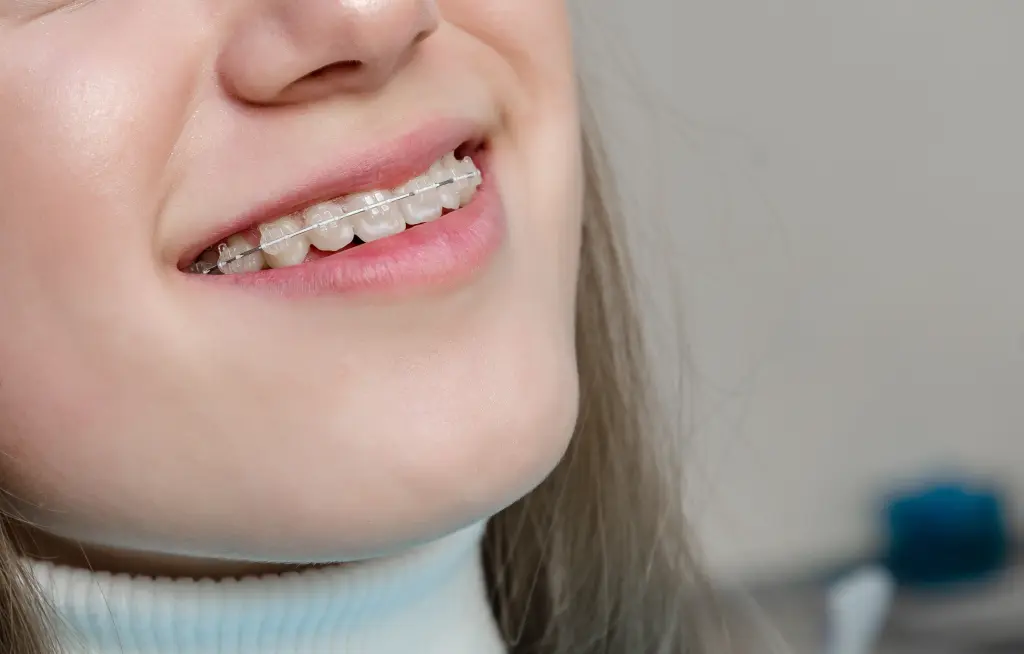Ceramic Braces and Invisalign
In modern orthodontics, two of the most popular aesthetic treatments for teeth alignment are ceramic braces and Invisalign.
Both aim to improve teeth positioning and bite (occlusion), yet each provides a distinct experience.
Ceramic braces use tooth-colored brackets, making them less noticeable than traditional metal braces. Meanwhile, Invisalign utilizes a series of clear, removable aligners — digitally customized to fit each patient’s teeth.
While both options are effective, choosing between them should depend on your dental condition, aesthetic preference, and lifestyle.
Aesthetic and Visibility Comparison
In terms of appearance, Invisalign excels in aesthetics. Its transparent aligners are virtually invisible, making it a favorite choice among young professionals and individuals who frequently appear in public.
Ceramic braces also offer aesthetic advantages — their tooth-colored brackets blend naturally with the teeth. However, the wire and elastic ligatures can still be visible, especially when stained by foods or beverages such as coffee, tea, or wine.
Comfort and Daily Maintenance
When it comes to comfort, Invisalign provides greater flexibility. You can remove the aligners while eating, drinking (except for water), or brushing your teeth — making oral hygiene easier to maintain. However, discipline is essential: aligners must be worn for at least 20–22 hours a day to achieve optimal results.
On the other hand, ceramic braces are fixed appliances that remain in place throughout the treatment. Although an adjustment period is needed, most patients adapt within one to two weeks. The main challenge lies in cleaning around the brackets to prevent plaque or tartar buildup.
Effectiveness for Various Dental Cases
Both ceramic braces and Invisalign are effective, but their performance depends on the complexity of each case.
Invisalign works best for mild to moderate cases — such as minor crowding, spacing between teeth, or slight open bites.
Ceramic braces, however, are more effective for complex conditions like severe rotations, vertical tooth movements, or significant crossbite and deep bite corrections. The combination of brackets and wires provides orthodontists with precise three-dimensional control over tooth movement.
To determine the most suitable orthodontic method for your condition, your orthodontist will perform a thorough assessment of your teeth and jaw structure.
Lifestyle Considerations: Food, Hygiene, and Discipline
The success of orthodontic treatment is not only about the appliance — it also depends on lifestyle and daily habits.
With Invisalign, you can enjoy your favorite meals without worrying about damaging the appliance since the aligners are removable. However, after every meal, you’ll need to clean your mouth before putting them back on.
For ceramic braces users, it’s best to avoid hard or sticky foods that could dislodge the brackets.
In terms of hygiene, transparent aligners like Invisalign are easier to clean, whereas ceramic braces require extra care to prevent black plaque buildup or discoloration on the brackets.
Consultation: Finding the Right Choice
Every smile is unique. A consultation with an orthodontist is essential to determine whether ceramic braces or Invisalign suit you best.
At Onyx Dental Center, our orthodontists perform a comprehensive analysis, which includes:
Clinical and oral examination
Digital scans and panoramic imaging
A personalized treatment plan designed to meet both aesthetic and functional needs
This approach ensures that every treatment decision aligns with your dental health and lifestyle.
Conclusion
Both ceramic braces and Invisalign deliver effective and aesthetic orthodontic outcomes.
Choose Invisalign if you value flexibility, comfort, and a nearly invisible appearance.
Choose ceramic braces if you require stronger tooth movement control for more complex cases.
Whatever your choice, make sure your treatment is guided by a professional orthodontist — to achieve a balanced smile that is both functional and beautiful.
References
AlMogbel A. (2023). Clear Aligner Therapy: Up to date review article. Journal of orthodontic science, 12, 37. https://doi.org/10.4103/jos.jos_30_23
Caruso, S., De Felice, M. E., Valenti, C., & others. (2024). An evaluation of the Invisalign® aligner technique and consideration of the force system: A systematic review. Systematic Reviews, 13, 43. https://doi.org/10.1186/s13643-023-02437-5
Elekdag-Türk, S., & Yilmaz, H. (2018). Ceramic brackets revisited. In B. Işik & F. D. Uzuner (Eds.), Current approaches in orthodontics (pp. xx–xx). IntechOpen. https://doi.org/10.5772/intechopen.79638

